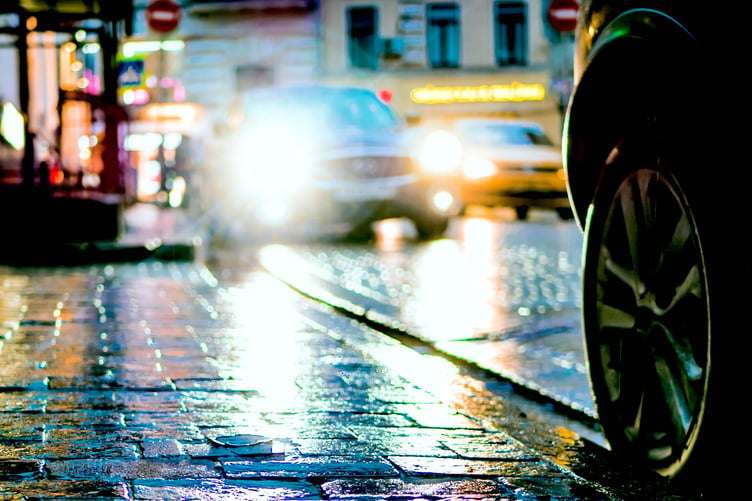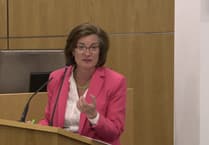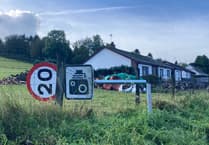Do you find modern car headlights too bright?
A group of campaigners - led by long term consumer champion Baroness Hayter - met the Department of Transport’s Lords Minister to urge the government to undertake research to better understand the causes of the problem of dazzling headlights on our roads.
Car headlights should be better regulated to reduce the dazzle they cause on-coming drivers, says a new report by concerned road users, light experts and other specialists. It should strike a chord with many older people locally who have told me they no longer feel confident driving at night, so they can no longer make it to meetings. A few months ago I had a frightening experience too, driving dazzled through Swansea during a night of heavy rain with bright road reflections and realising I could not read any signs or make out where the turnings were.
The group is calling on the government to investigate the need to introduce appropriate standards on new tech, high spec headlights including LEDs which produce glare that can temporarily blind other drivers, risking road safety.
According to Government figures cited by ITV’s This Morning recently, dazzling headlights have been a contributory factor in an average of 280 collisions each year on Britain’s roads. Six of these each year resulted in loss of life.
According to the Royal Society for the Prevention of Accidents, between the ages of 15 and 65, the time it takes to recover from glare increases from one to nine seconds. At 60 miles an hour, that’s 250 yards in nine seconds.
Baroness Hayter said: “The Group’s first interaction with Ministers led them to say: No problem here, no evidence of deaths or serious injuries.
“Since then, the public have reached out to tell us they disagree, and that many are stopping driving at night, with eight out of 10 drivers surveyed wanting action to reduce glare. Government needs to heed the call for action and be on the side of road safety. The Highway Code states - ‘You must not use any lights in a way which would dazzle… other road users’ – a requirement breached on every road every night.”
The RAC has commissioned a poll of over 2,000 UK drivers, the findings of which suggest that 89% think some headlights are too bright, and 85% of drivers affected by headlight glare say the problem is getting worse.
Two-thirds of those affected say that being dazzled forces them to slow down considerably until they can see clearly again, and 64% say some headlights are so bright they risk causing accidents.
One in seven drivers aged 65 and over said they avoid driving at night because of headlight glare.
Rod Denis of RAC said: “A large majority of drivers we surveyed tell us they find the dazzling nature of some car headlights makes driving difficult, if not unsafe.
“While current regulations governing vehicle headlights are agreed at an international level, we think the whole topic warrants more focus from the Government.
“There is a good argument for independent research to be commissioned that gets to the root causes of headlight glare so that the problem so many drivers face can be tackled.”
Last Wednesday, over 250 people commented on a Wales Online Facebook post that read: “The RAC wants the government to do an independent study into how bright headlights are these days as 4 in 5 drivers say the glare is ‘getting worse’.”
“Definitely needed,” commented one reader. “I wear those night driving glasses that make the lights look more yellow than white, it helps a bit, but some are so blinding especially on unlit roads.”
Another said: “I entirely agree, these headlights make me very reluctant to drive at night,” while a third concurred: “Brightness definitely needs to be looked at. I’ve had to slow right down due to being blinded by oncoming headlights.”
Dr John Lincoln of LightAware, the lead author of the recent report, said: “Many modern headlights are incompatible with dark-adapted human eyesight – particularly for older drivers.
“They are too bright, too blue and are blinding over too long a distance. Regulation is required to cut the risk of accidents and reduce driver fatigue.”
In her foreword to the report, Baroness Hayter writes: “It’s not your eyes; it’s the on-coming headlights”.
“So might be the imagined conversation of an optician to a patient who’s arrived asking for glasses or treatment because night driving has become something of a nightmare.
“Optometrists are seeing an increasing number of patients no longer driving at night because of headlight dazzle, which, in winter months, means short days leave very little driving time.
“The public know this too. Valerie – a young grandmother – told us of ‘the most terrifying experience driving home in a mini cooper after dropping off my granddaughter. SUV cars’ glaring lights left me feeling blinded and stunned for at least five seconds; the same happens on my way to work even with streetlights.’
“Eight out of ten RAC members think something should be done to reduce glare whilst in the United States thousands are signing a petition for action, and the FIA Europe is addressing this modern-day problem.
“Whilst older people – with eyes that adjust more slowly or having the beginnings of a cataract – are particularly affected, this is good reason to take action rather than discriminate against them by making driving a challenge. It’s not just car drivers. As one motorcyclist said: You should try this with a wet visor!’.
“Put simply, new technology’s innovative headlights, which might illuminate the road for the person behind the wheel, are a menace for on-coming vehicles or pedestrians. It’s worse in built up areas, with ‘sleeping policemen’ causing an oncoming car suddenly to angle upwards, but also in country lanes where a car appears round a bend before its supposedly clever computer has dipped or angled the headlight. These hazards are primarily due to unregulated luminance and blue wavelength light, as existing standards largely predate today’s vehicle designs.
However, that is no reason for not enforcing the Highway Code, rule 114 of which states: ‘You must not use any lights in a way which would dazzle …other road users’.
“Despite that, and US data showing up to 15 per cent of accidents are caused by glare from highbeam headlights, our government is deaf to the issue, telling us as that their statistics showed little or no contribution from dazzle on accidents…
“The Group which produced this report brought together representatives of drivers, of light experts and consumer champions and reviewed information from optometrists, medical experts, transport research and European specialists.
“Our first ask of Ministers is that they recognise the problem.
“The second is that they undertake research and then use the results to set standards for brightness and blue light emissions.
“The third is to brings together manufacturers, optometrists, drivers, standard setters, transport research experts, insurers, MOT testers and lighting specialists from the UK and beyond, to work with EU and other standard setters to reduce this modern-day menace.
“Let’s not wait for an accident caused by an on-coming car to realise that some of today’s headlights are not fit for purpose, given the dazzle they cause other road users.”
The meeting with Lord Davies of Gower, the DfT Minister, took place on January 16. At the meeting, the Group presented the Report and the RAC findings, and asked the government to acknowledge the problem, research its causes and solutions, and raise the issue at UNECE.
The government agreed to consider those requests sympathetically, and suggested they meet again once a European survey and other material becomes available.





Comments
This article has no comments yet. Be the first to leave a comment.